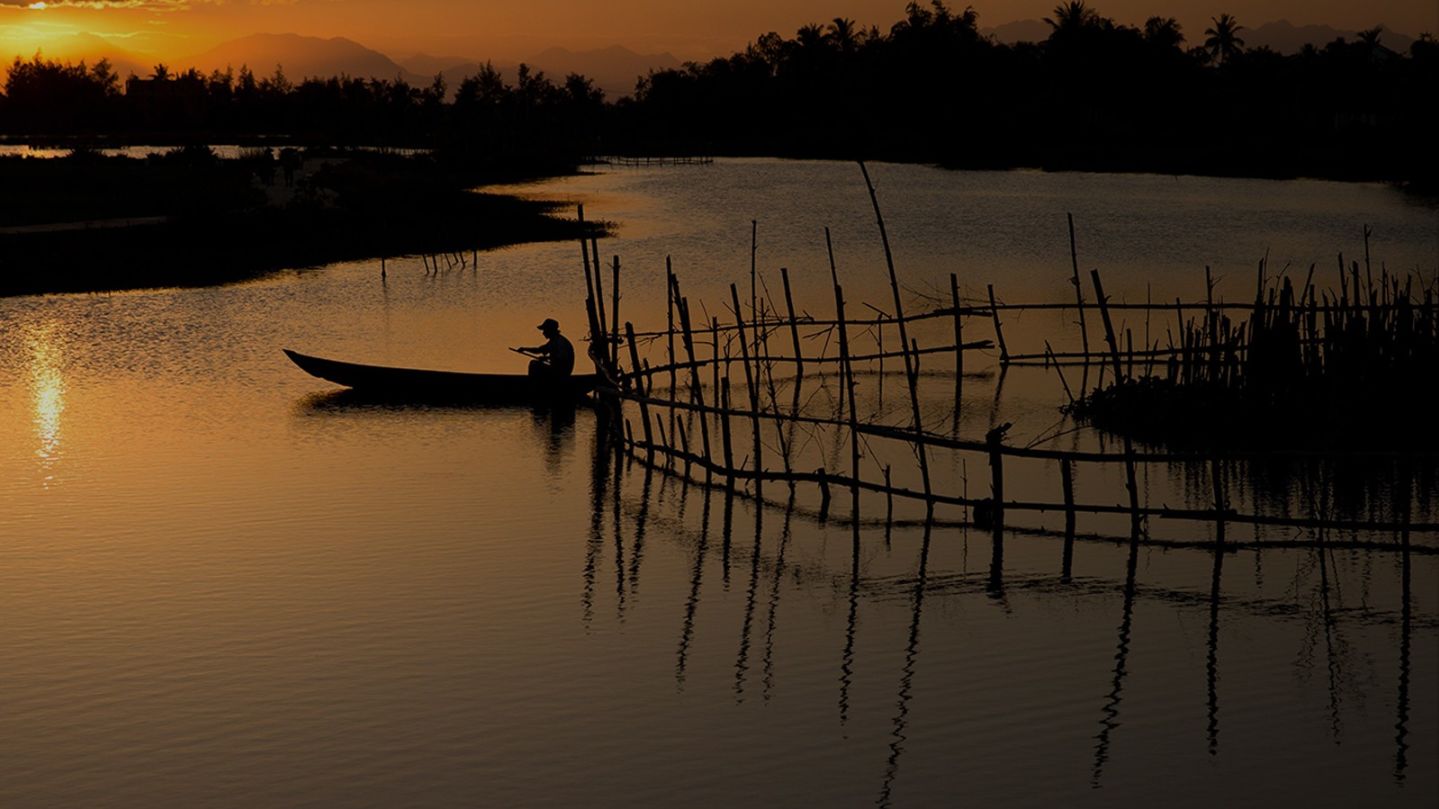Captain Tho Pham first went out to sea when he was 14 years old. Now, he’s been a junk skipper in Halong Bay for more than a decade.
He knows his way through the tangle of islands that cover Halong as well as anyone alive.
“Long ago, our forefathers were fighting to resist an invasion – just one of the many we’ve fought off over the centuries,” says Captain Tho as he guides his 55-meter junk boat between rearing limestone outcrops.
“Legend has it that the gods sent a family of giant dragons to help us. The dragons spat great blocks of jade, the size of mountains, which formed this barricade of islands and blocked the invasion.”
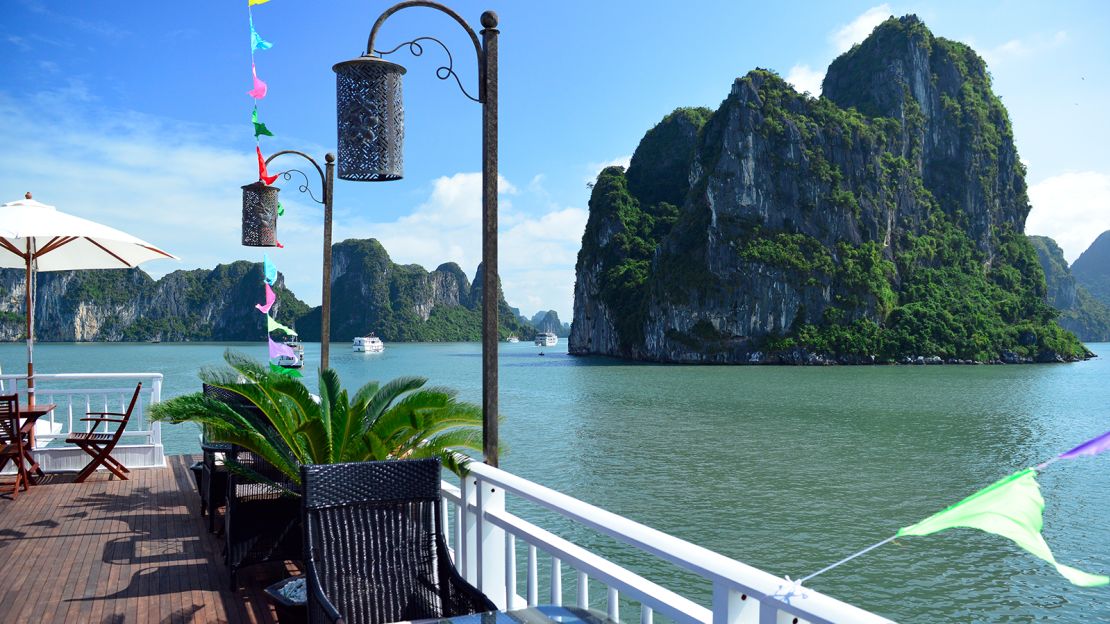
Wherever you travel in Vietnam, complex legends and myths are commonplace, so it doesn’t surprise me to hear there’s more to this tale.
“Once the invasion was repelled, the dragon family decided to settle in the bay,” the captain continues. “Halong means ‘where the dragon descends to the sea’, and this is where the mother dragon came to live.
“Bai Tu Long is where her children settled and the fearsome currents around Bạch Long Vĩ island are caused by mischievous baby dragons thrashing their tails – bạch means ‘white’ from the color of the foam, long means ‘dragon’ and vĩ means ‘tail’.”
Across the backs of dragons
According to UNESCO, which inscribed Halong on the World Heritage List in 1994, there are about 1,600 limestone islands and islets here.
It’s probable that Captain Tho has come about as close as anyone ever has to visiting them all.
Standing beside him on the bridge of the Heritage Jasmine, it occurs to me that we could indeed be sailing amongst the massively scaled backs of an entire horde of dragons.
Ahead of us the limestone karsts rise above the swirling currents, jungle dripping from their peaks like tangled seaweed.
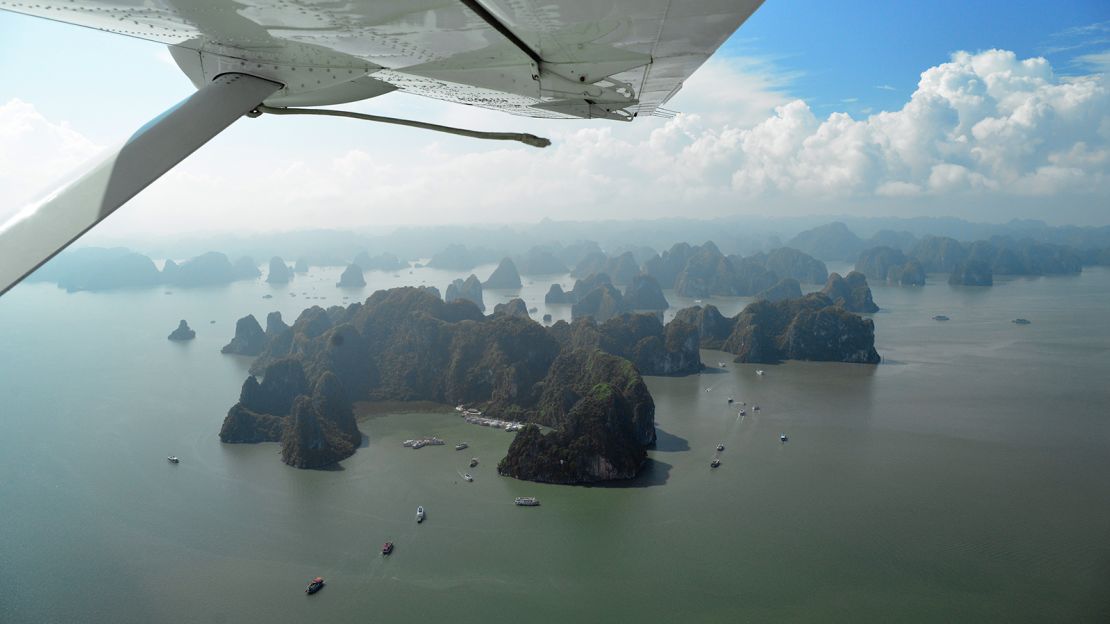
My first view of Halong, the morning before, was from high above – through the window of a banking Hai Au Aviation seaplane.
That first sight of this spectacular landscape is hard to describe.
Even Ho Chi Minh – rarely at a loss for words – struggled to depict it: “It’s a wonder that one cannot impart to others,” he said humbly.
The islands stretch farther than the eye can see, and the jade-colored peaks do indeed form what seems to be an impenetrable barrier.
The Cessna Grand Caravan slipped smoothly down through the ocean haze and, as she skipped to a halt on the rippled surface of the Gulf of Tonkin, I looked down to see surprised fish flapping on the plane’s pontoons.
It was a poignant sign of how rich in sea life these tropical waters must be and how they could have provided rich pickings for fishing communities for thousands of years.
Luxury junk tours: Cruising Halong in style
I boarded the Heritage Jasmine in the early afternoon and after toasting our arrival in Ha Long with Bia Hà Nội (Hanoi Beer) and a meal of delicious phở bo (beef noodles infused with delicate herbs) I slept well in my Heritage Line superior cabin.
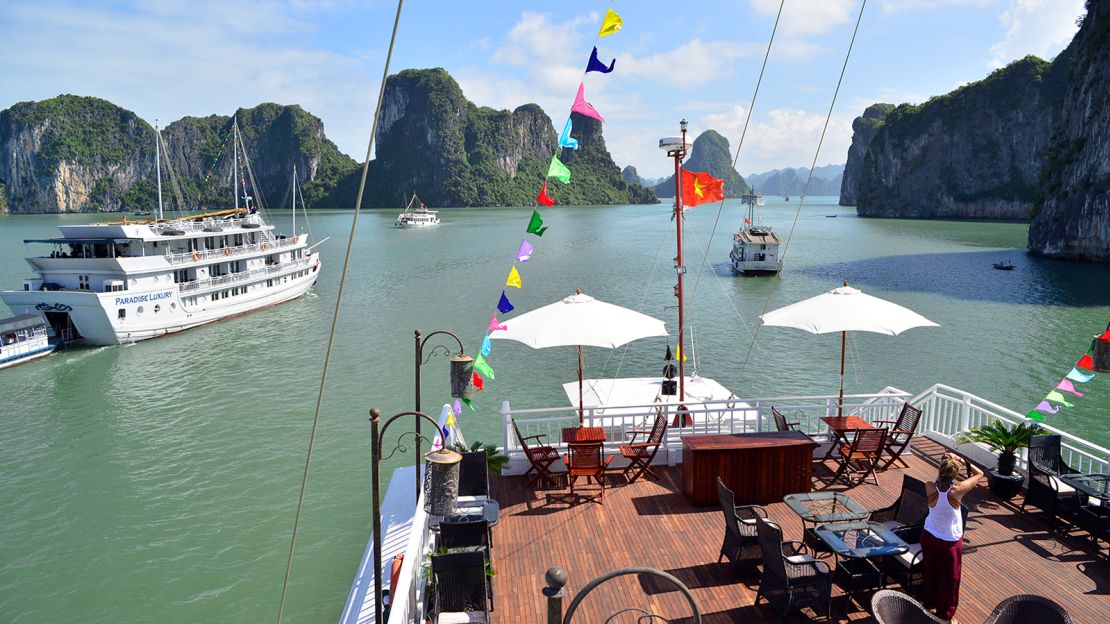
Far from being just a floating vantage point, the best of Halong’s junks bring important income to local people and are adept at steering clear of crowded waters.
They provide luxury access to some of Vietnam’s most unexpected adventures and can be more active that you might imagine a typical cruise to be.
Over the course of the next few days we would kayak through flooded caverns into hidden lagoons, cycle to isolated rice-farming villages and search for rare Cat Ba langurs – some of the world’s most endangered monkeys, found nowhere else in the world and with only an estimated 70 remaining.
On our last morning we woke to find the Jasmine already anchored near the floating village of Cua Van. While the bay once supported many fishing villages, its protected status means that only around 200 people live in these floating communities today.
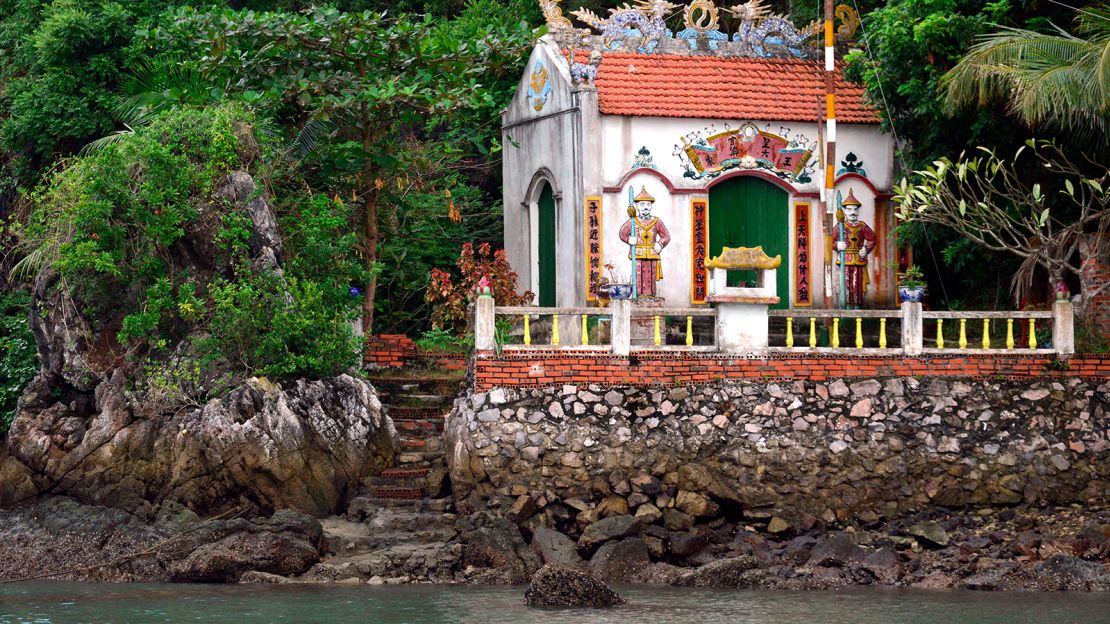
The fishermen of Cua Van supplement their income by paddling tourists among the floating pontoon houses in their iconic flat-ended sampan boats.
As the seasons change and the fish drift, the number of houses also fluctuates – ebbing and flowing like flotsam on the tide. Settlement in these islands was limited up until the 19th century by flotillas of rampaging Chinese and Vietnamese pirates.
With peace has come other pressures in the form of a new invasion: The traditional inhabitants are now outnumbered by the 300 or so junks (some carrying more than 60 guests) that are said to operate in the bay these days.
Even before they formed their little floating communities the fishermen lived in the great cave complex, which honeycombs the center of Cai Tai islet.
Archaeologists believe that Tien Ong was occupied by settlers of the Hoabinhian culture who lived here 10,000 years ago. The modern inhabitants of Halong still take shelter in the caves from time to time.
“Over in the corner there’s a little ‘honeymoon alcove’,” says our guide. “Many of the locals claim that it was where they were conceived. There’s still a tradition that this is where the fishermen go when they want… Well, how can I say this? When they want to make new Halong Bay fishermen.”
Asia experts Backyard travel offer a four-day tour taking in Hanoi and a Halong Bay Junk cruise from US$447 per person.
